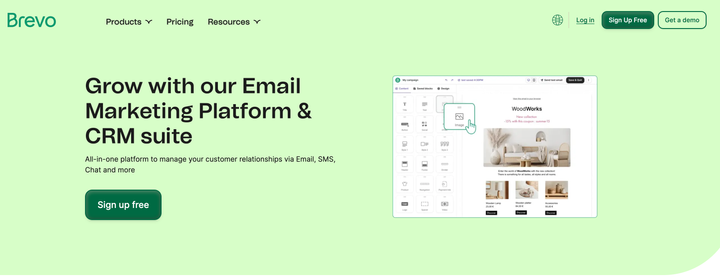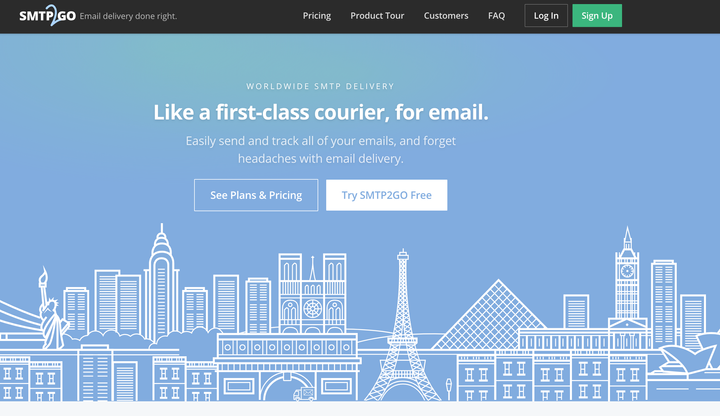Top 10 Mailtrap Alternatives for Better Email Delivery
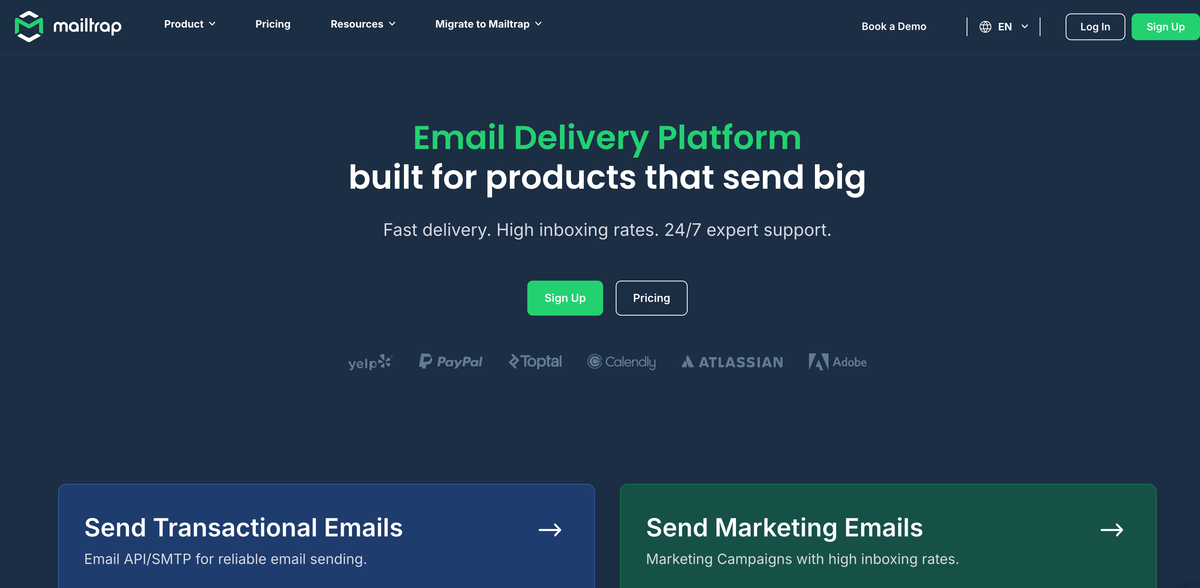
While Mailtrap provides a powerful, unified solution, it isn’t the perfect choice for every business. Some may seek a platform with a longer-standing history in marketing automation, while others may prefer a single, basic API with no integrated testing environment.
Mailtrap is a comprehensive email platform that helps product teams and developers send emails. It's known for its robust API, reliable delivery, and a secure email infrastructure.
Whatever the reason you might look for Mailtrap alternatives, this write-up provides you with the top 10 contenders. But before that, let’s take a closer look at Mailtrap to help you make an informed choice.
Key features
Mailtrap Email API/SMTP service is built for high deliverability and fast delivery. It provides the infrastructure to support sending millions of transactional and marketing emails with industry-best analytics to monitor performance
That includes separate sending streams (endpoints) for transactional and bulk emails, US and EU servers, robust SDKs for the most popular programming languages, and helicopter-view dashboards to analyze email performance across different verticals (Mailbox Providers analytics included).
Why Mailtrap Could Be a Good Fit
If deliverability is your top priority and you send emails at scale with a strong tendency to grow, then Mailtrap is a good fit.
At first glance, the platform might seem overly technical and complex, but there’s a method to that. To provide high deliverability at scale, even on shared IPs, there has to be a lot of validation and authentication at the backend.
Also, Mailtrap is a good fit if you have a strong dev team that manages your email infrastructure. In that respect, it could be comparable to Amazon SES: a lot of technical setup, but well worth the effort due to the reliability and security you get in return.
Why You Might Consider Mailrap Alternatives
While Mailtrap has marketing features, some companies may prioritize a platform with a decades-long track record in advanced marketing automation. Some competitors also offer AI-driven features like:
- Complex segmentation and workflows: Intricate customer journey mapping, advanced list segmentation based on behavioral data, and multi-channel campaign automation (e.g., email, SMS, push notifications, etc.).
- Dedicated A/B testing: A more mature A/B testing suite for subject lines, content, and send times.
Full CRM Integration: Tighter, out-of-the-box integration with a wider range of CRM and sales tools, providing a single source of truth for all customer data.
Before we dive into the alternatives, let's talk about why so many folks are looking for the exit door:
The Price Tag : Mailtrap's pricing isn't for everyone, with its $85 pricing, it makes it somewhat inaccessible for a lot of smaller providers looking to find a reliable email delivery provider at a affordable price.
Oh, and you need email testing too? Add another $14.99 to $399.99 monthly for their Sandbox feature. It's like paying for Netflix AND Hulu when you actually wanted to watch one show.
Built for Developers, Confusing for Everyone Else: If you're not fluent in API documentation and SMTP configurations, Mailtrap can feel like trying to read a menu in a foreign language. Marketing teams often find themselves lost in technical jargon when all they wanted was to send a newsletter.
Limited Features Where It Counts: Sure, Mailtrap is excellent at email testing, but what if you need marketing automation? Customer segmentation? Pretty email templates? You'll need to look elsewhere or cobble together multiple tools.
Top 10 Mailtrap Alternatives That Actually Make Sense
1. Maileroo - The People's Champion
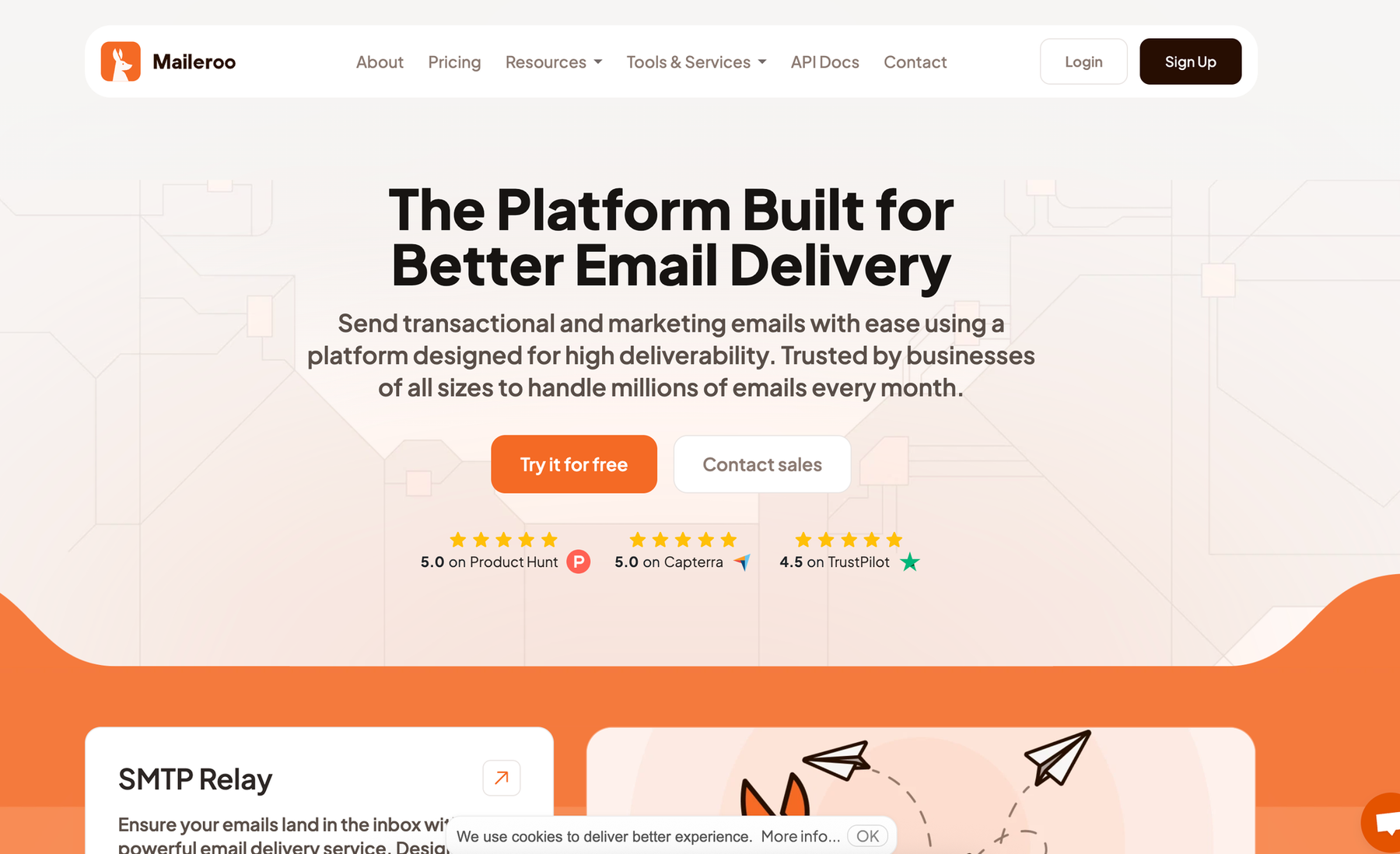
Think of Maileroo as the friendly neighborhood email service that actually listens to what you need. It's like having a local coffee shop that knows your order—reliable, affordable, and always there when you need it.
What Makes It Special: Maileroo combines email testing, transactional sending, and marketing features in one simple package. No juggling multiple subscriptions or learning two different systems.
The Numbers:
- Free: Up to 3,000 emails per month
- Paid: Starting at $10/month for 25,000 emails
- No separate testing fees—it's all included
Perfect For: Small to medium businesses that want everything in one place without breaking the bank. Their support team actually responds quickly (imagine that!), and setup is refreshingly simple.
The Catch: It's newer than some big names, so it doesn't have every enterprise bell and whistle. But honestly? Most of us don't need those anyway.
2. SendGrid - The Industry Veteran

SendGrid is like the reliable sedan of email services—it might not be flashy, but it'll get you where you need to go every single time.
What Makes It Special: Rock-solid infrastructure that handles billions of emails. When Instagram or Uber sends you an email, there's a good chance it's going through SendGrid.
The Numbers:
- Free: 100 emails per day
- Paid: Essentials starts at $19.95/mo and Pro starts at $89.95/mo
Perfect For: Businesses that need bulletproof reliability and don't mind paying a bit more for peace of mind.
The Catch: It's pricier than Mailtrap, and the interface feels like it was designed by engineers for engineers. Marketing teams might need a translator.
3. Mailgun - The Developer's Best Friend
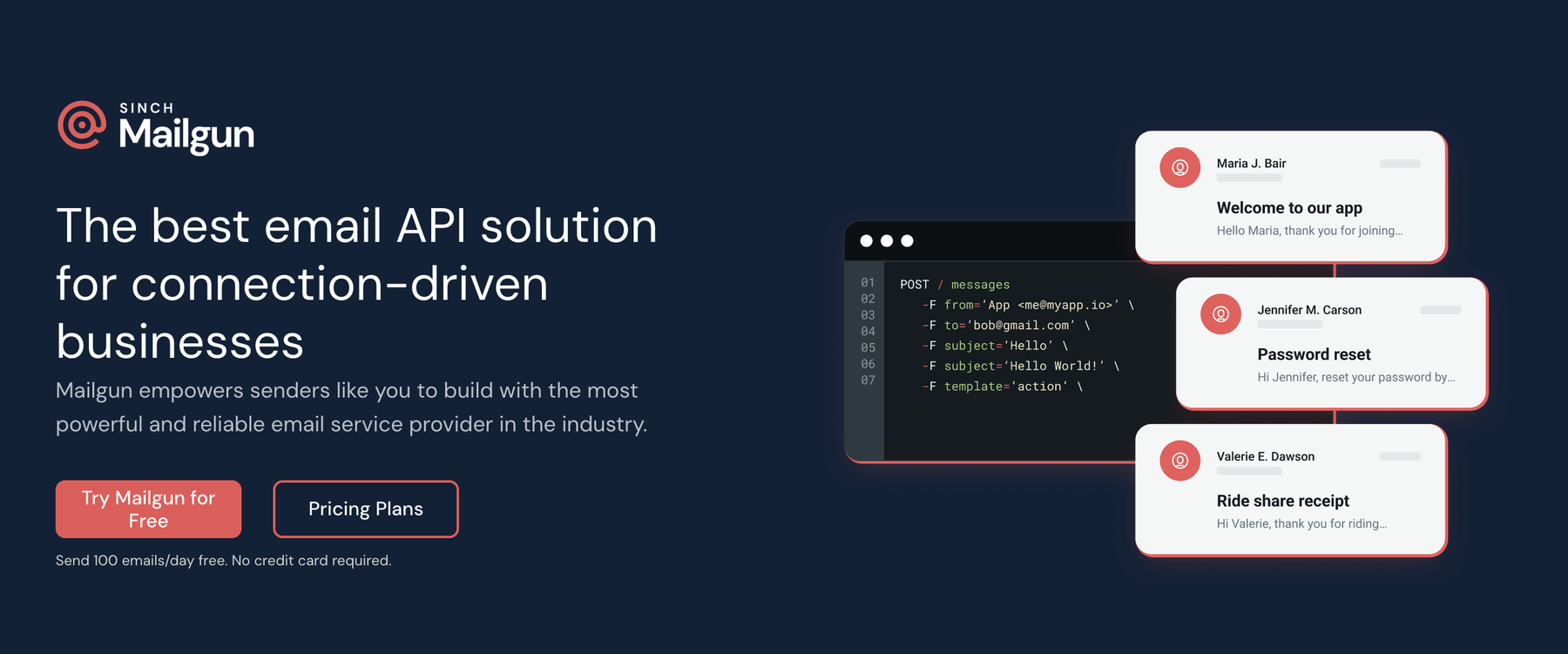
If SendGrid is a sedan, Mailgun is the sports car with a manual transmission—powerful if you know how to drive it.
What Makes It Special: Incredibly flexible API that lets developers do pretty much anything with email. It's like having a Swiss Army knife for email delivery.
The Numbers:
- No free tier
- Basic plan starts at $15 per month, billed monthly, and includes 10,000 emails per month
Perfect For: Developer teams who want complete control and don't mind getting their hands dirty with code.
The Catch: Non-developers will feel like they're trying to pilot a spaceship. Also, that $35 starting price is steep if you're just getting started.
4. Amazon SES - The Budget Option
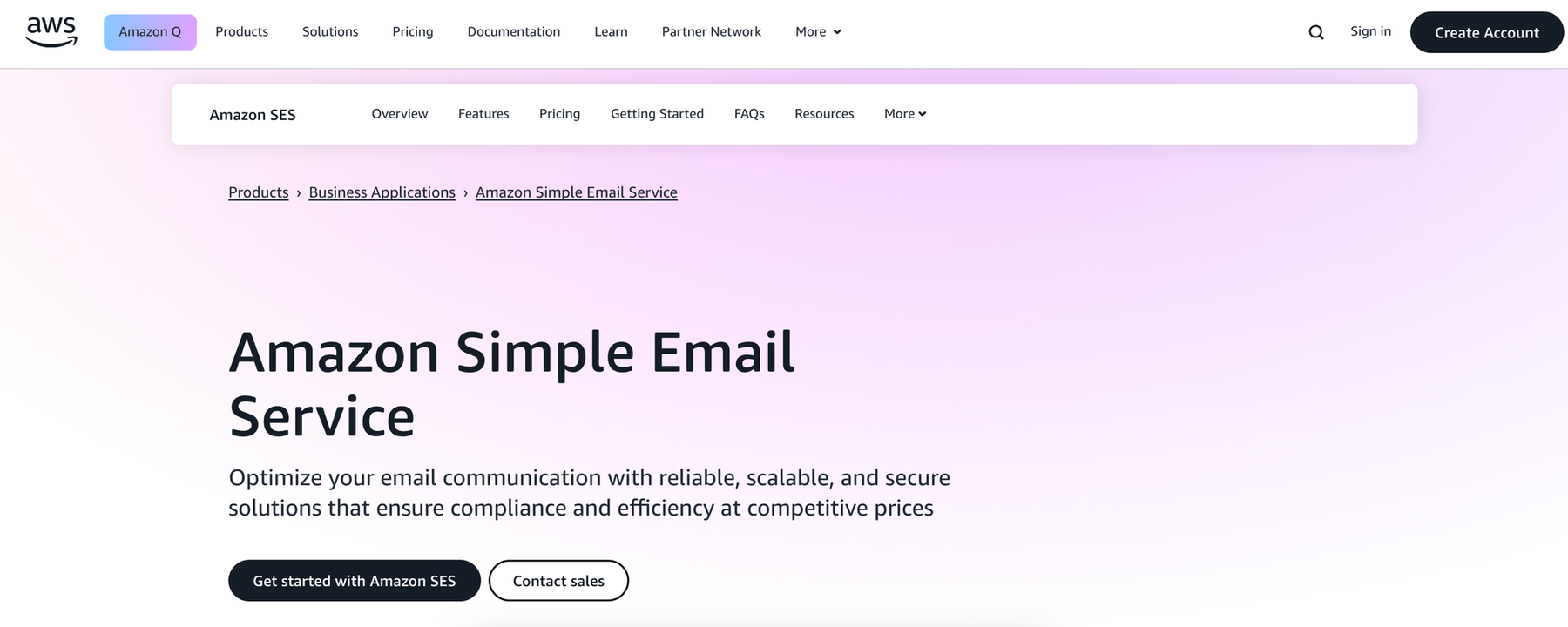
Amazon SES is like buying generic cereal—it does the job for a fraction of the price, but you'll need to pour it into a bowl yourself.
What Makes It Special: Ridiculously cheap pricing that makes other services look overpriced. We're talking $0.10 per 1,000 emails. That's not a typo.
The Numbers:
- Pay-as-you-go: $0.10 per 1,000 emails
- Plus minimal data transfer costs
Perfect For: Tech-savvy teams with AWS experience who prioritize cost above all else.
The Catch: Setting it up is like assembling IKEA furniture without instructions. If you're not technical, you'll probably throw in the towel before sending your first email.
5. Postmark - The Speed Demon
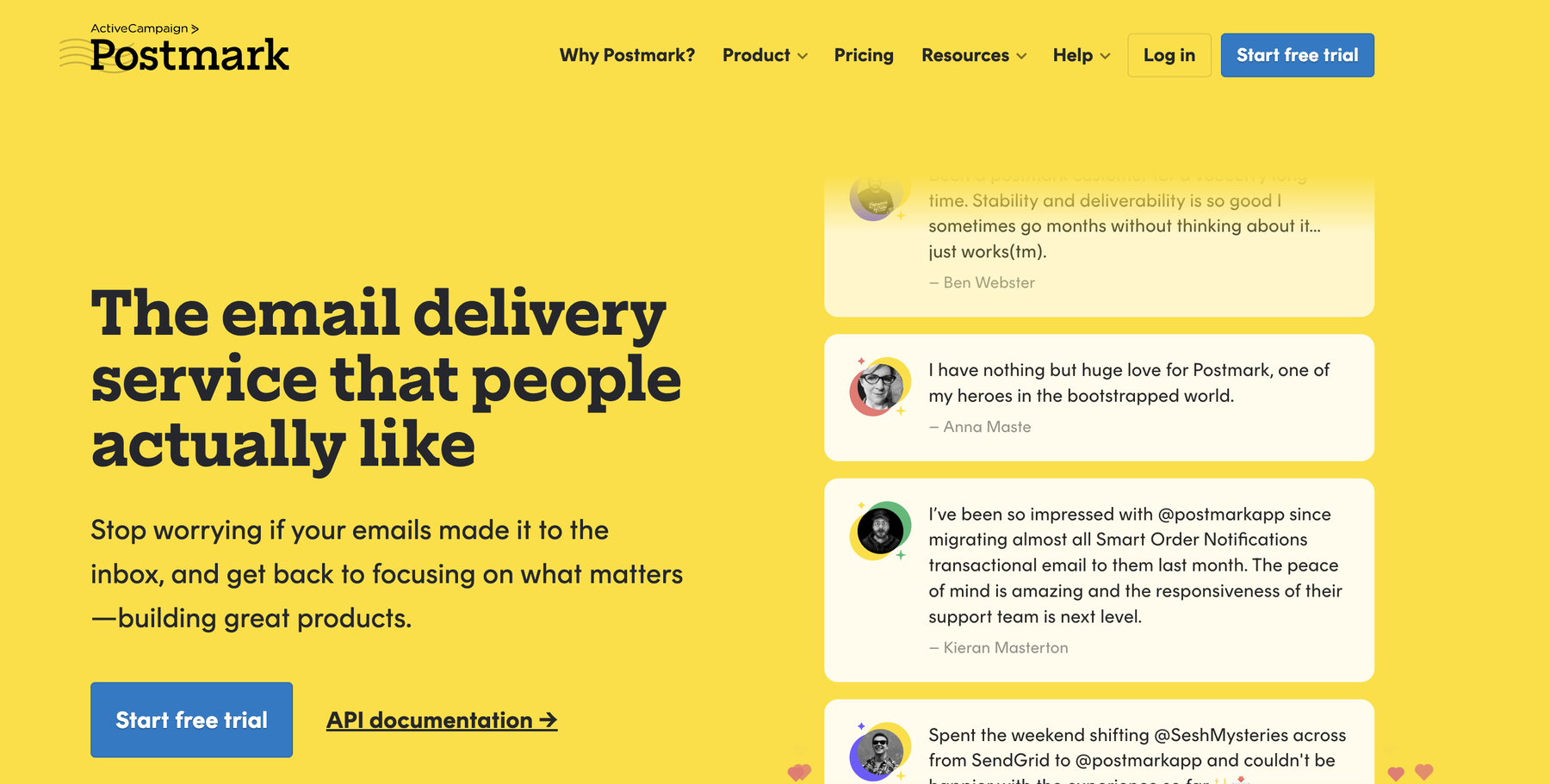
Postmark is the email service equivalent of same-day delivery, ideal for when you urgently need that password reset email to arrive promptly.
What Makes It Special: Lightning-fast delivery times and laser focus on transactional emails. Their obsession with speed is evident.
The Numbers:
- No free tier
- Starts at $10/month plan (10,000 emails)
Perfect For: Apps and services where every second counts—think password resets, order confirmations, and time-sensitive notifications.
The Catch: More expensive per email than most alternatives, and they don't do marketing emails at all. It's transactional or nothing.
6. Brevo (formerly Sendinblue) - The Swiss Army Knife
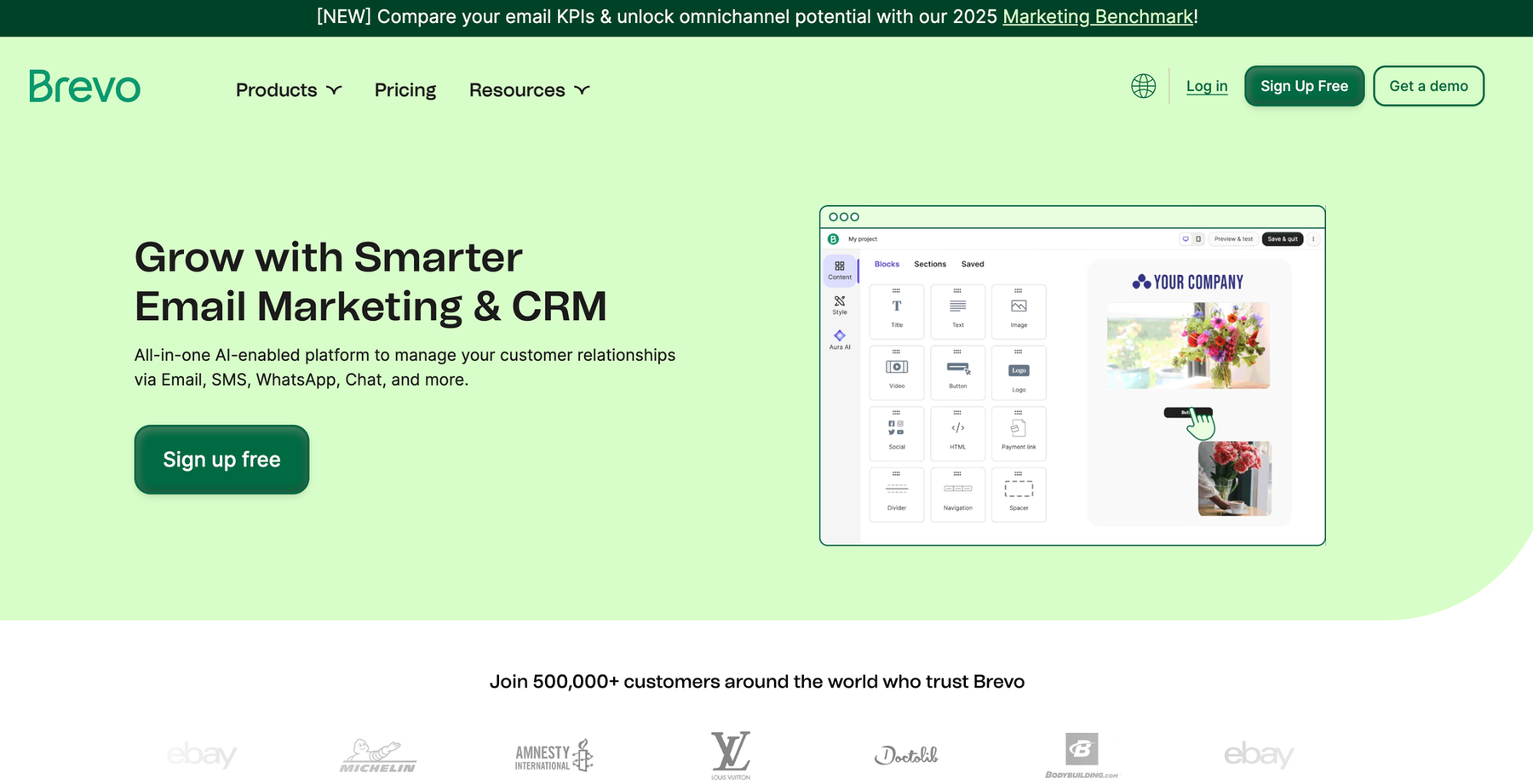
Brevo is like getting a smartphone that also makes coffee—it does everything, though you might not need all the features.
What Makes It Special: Combines email marketing, transactional emails, SMS marketing, and even basic CRM features. It's an all-in-one marketing platform.
The Numbers:
- Free: 300 emails per day
- Paid: Starting at $25/month for 20,000 emails
Perfect For: Small businesses that want all their marketing tools in one place and don't want to juggle multiple subscriptions.
The Catch: Jack of all trades, master of none. Each feature is good but not best-in-class, and those daily sending limits on cheaper plans can be frustrating.
7. Mailjet - The Team Player
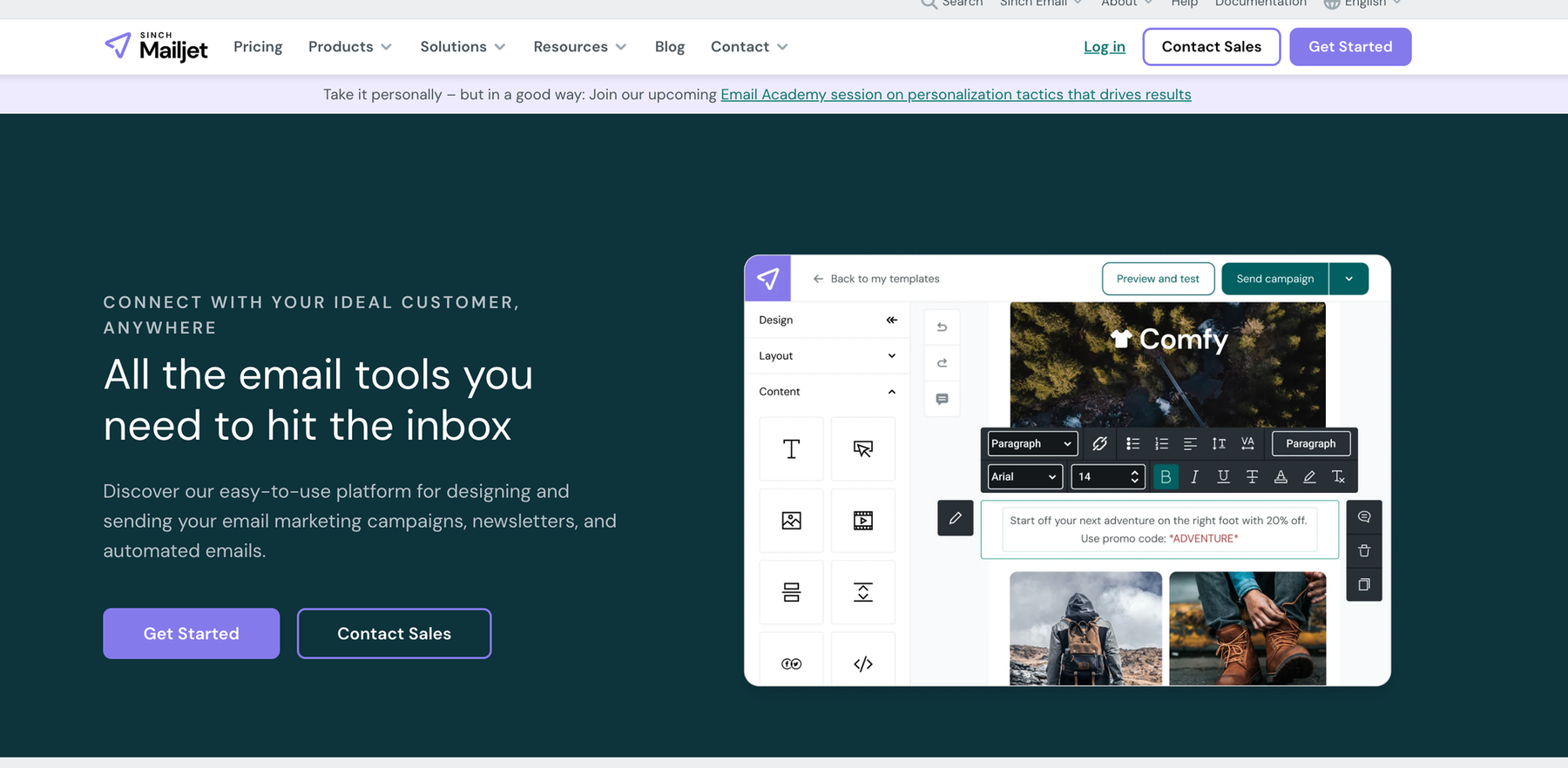
Mailjet, akin to Google Docs for email, caters to teams that require seamless collaboration without causing unnecessary disruptions.
What Makes It Special: Real-time collaboration features let multiple people work on the same email campaign. No more email tennis with "final_final_v3.html" attachments.
The Numbers:
- Free: 6,000 emails per month (200 per day)
- Paid: Starting at $15/month for 30,000 emails
Perfect For: Marketing teams that need to collaborate on email campaigns and want to avoid the "too many cooks" problem.
The Catch: The interface feels a bit dated, like it's stuck in 2015. Also, advanced features are limited compared to specialized tools.
8. SparkPost - The Data Nerd's Dream
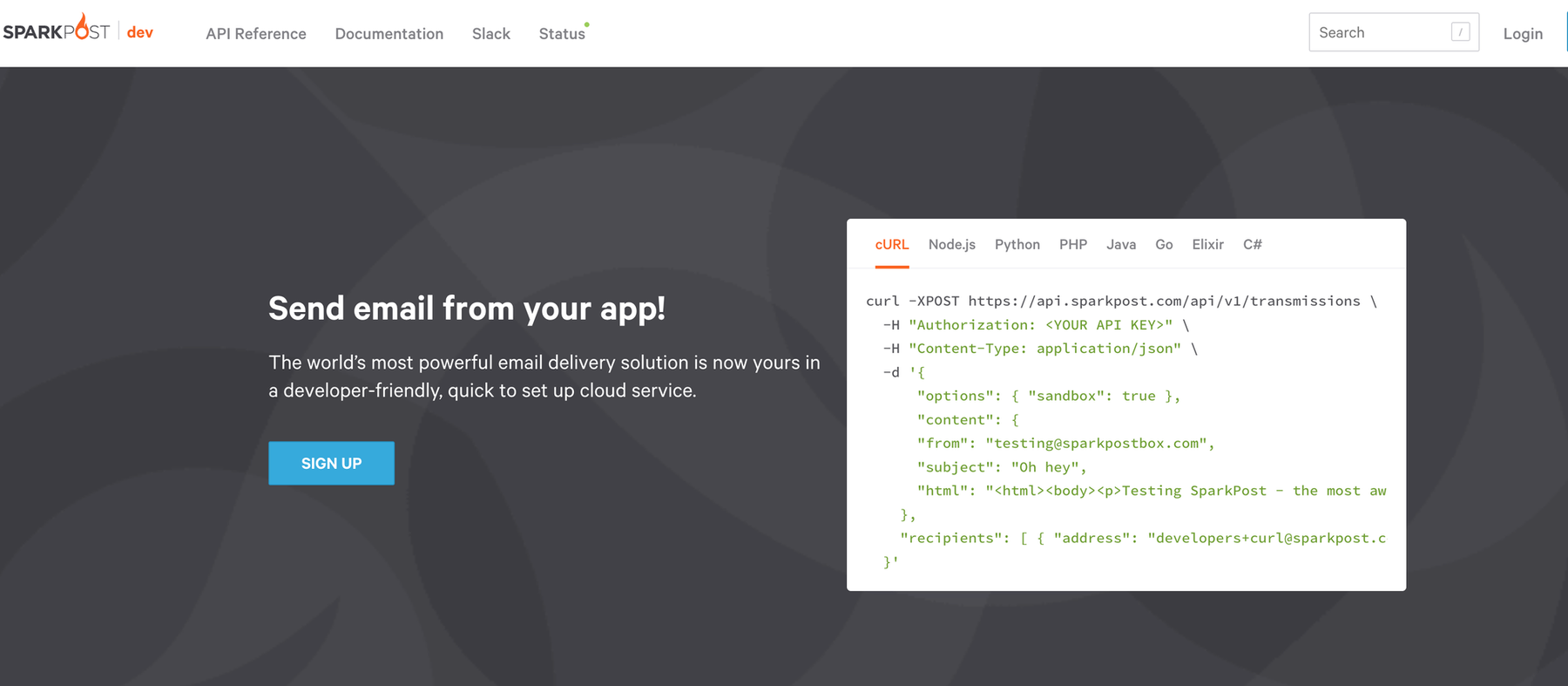
SparkPost is like having a crystal ball for your emails—it predicts problems before they happen and gives you more data than you knew you needed.
What Makes It Special: Advanced analytics that would make a data scientist weep with joy. Predictive analytics, machine learning, the works.
The Numbers:
- No free tier
- Starts at $20/month for 50,000 emails
Perfect For: Large businesses that live and die by their email metrics and need to squeeze every ounce of performance from their campaigns.
The Catch: It's like buying a Ferrari to drive to the grocery store—massive overkill for simple email needs. Plus, you'll need someone who understands all those analytics.
9. SMTP2GO - The No-Nonsense Option
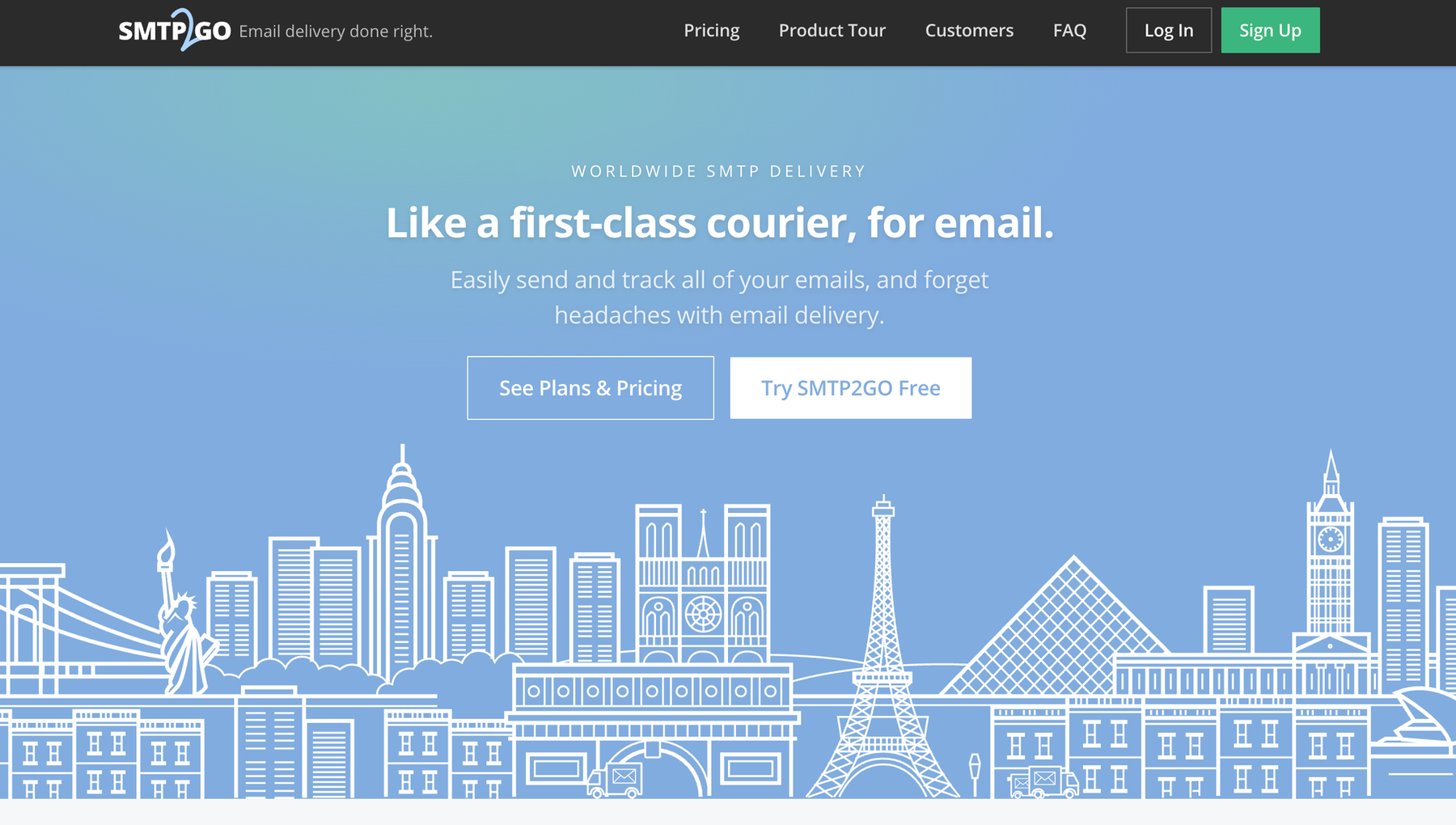
SMTP2GO is like a reliable old truck—not pretty, not fancy, but it starts every morning and gets the job done.
What Makes It Special: Dead simple SMTP service that just works. No fancy features, no complicated setup, just reliable email delivery.
The Numbers:
- Free: 1,000 emails per month
- Paid: Starting at $10/month for 10,000 emails
Perfect For: Anyone who just needs emails to arrive without any fancy features or complicated setup.
The Catch: It's basic. Really basic. If you need anything beyond "send email from A to B," you'll need to look elsewhere.
10. Resend—The New Kid on the Block

Resend is like the cool new app everyone's talking about—modern, sleek, and built for how developers work today.
What Makes It Special: Built specifically for modern development workflows with React email templates and a beautifully simple API.
The Numbers:
- Free: 3,000 emails per month
- Paid: Starting at $20/month for 50,000 emails
Perfect For: Modern development teams using React and other current frameworks who want an email service that speaks their language.
The Catch: It's new, so the feature set is still growing. Also, the pricing isn't particularly competitive for high-volume senders.
So, which one should you choose?
Let me break it down based on what actually matters:
If you want the best bang for your buck: Maileroo or Amazon SES (if you're technical)
If you need something your whole team can use: Maileroo, Brevo, or Mailjet
If you're a developer who loves control: Mailgun or Resend
If reliability is everything: SendGrid or Postmark
If you're sending millions of emails: Amazon SES (and hire someone to set it up)
If you need marketing features too: Brevo or Maileroo
Making the Switch: It's Easier Than You Think
Switching email providers feels scary, like changing banks or dentists. But here's the thing—most of these services make migration pretty painless. They want your business, so they'll help you move.
Start small. Pick one that fits your needs and budget, sign up for a free trial or free tier, and send a few test emails. Once you're comfortable, you can miMost businesses are able to quickly transition to a new platform within a few days.a day or two.
The Bottom Line
Mailtrap isn't bad—it's just not right for everyone. It's like a Swiss watch when occasionally all you need is a reliable digital clock. The alternatives above each excel in different areas, whether that's price, simplicity, features, or reliability.
The ideal email service is one that meets your unique requirements without requiring you to take unnecessary steps or strain your finances. Don't get trapped paying for features you don't use or wrestling with complexity you don't need.
Pick the one that makes sense for you, and get back to what really matters: actually communicating with your customers instead of fighting with your email platform.



